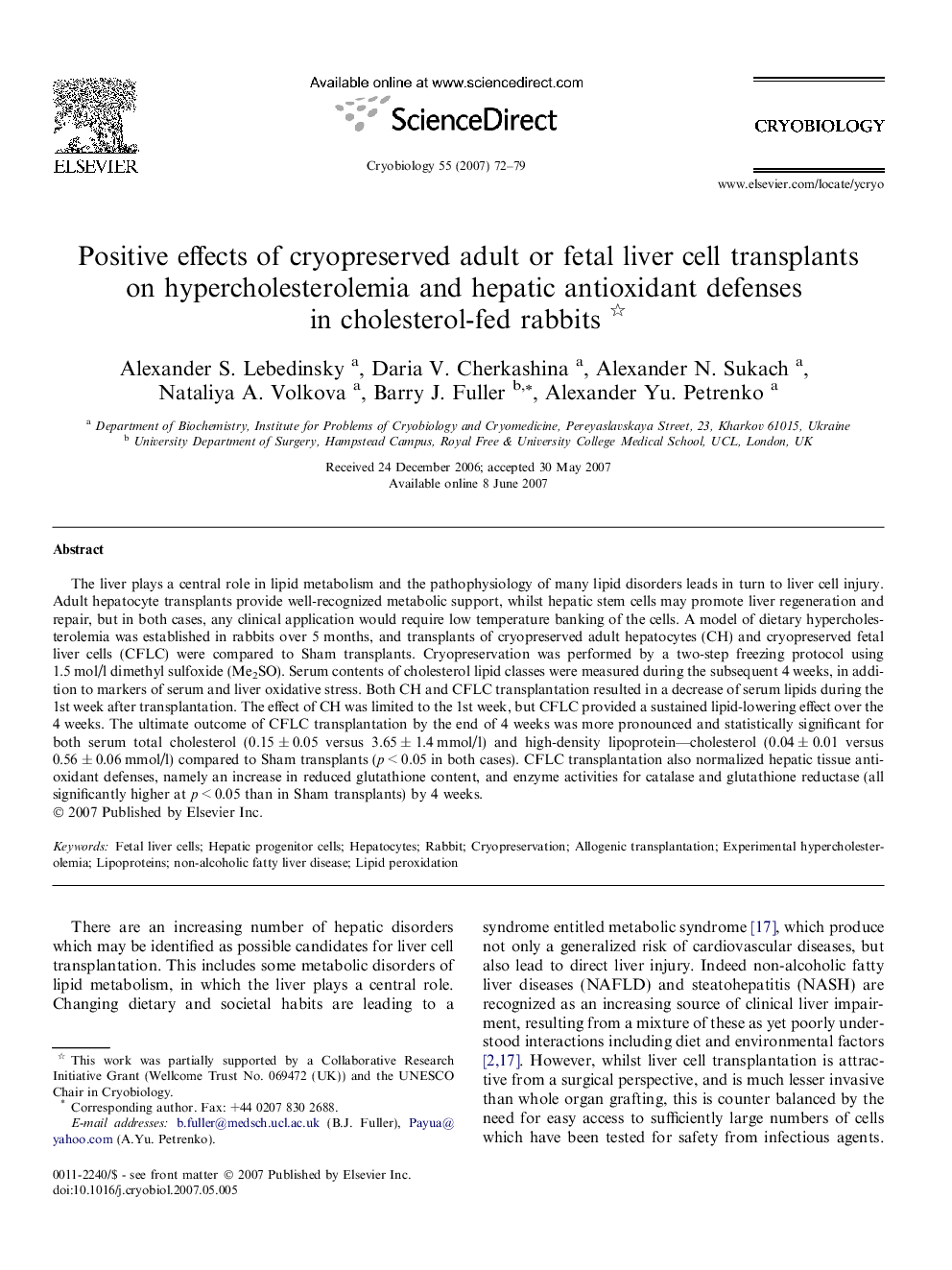| Article ID | Journal | Published Year | Pages | File Type |
|---|---|---|---|---|
| 2169281 | Cryobiology | 2007 | 8 Pages |
Abstract
The liver plays a central role in lipid metabolism and the pathophysiology of many lipid disorders leads in turn to liver cell injury. Adult hepatocyte transplants provide well-recognized metabolic support, whilst hepatic stem cells may promote liver regeneration and repair, but in both cases, any clinical application would require low temperature banking of the cells. A model of dietary hypercholesterolemia was established in rabbits over 5 months, and transplants of cryopreserved adult hepatocytes (CH) and cryopreserved fetal liver cells (CFLC) were compared to Sham transplants. Cryopreservation was performed by a two-step freezing protocol using 1.5 mol/l dimethyl sulfoxide (Me2SO). Serum contents of cholesterol lipid classes were measured during the subsequent 4 weeks, in addition to markers of serum and liver oxidative stress. Both CH and CFLC transplantation resulted in a decrease of serum lipids during the 1st week after transplantation. The effect of CH was limited to the 1st week, but CFLC provided a sustained lipid-lowering effect over the 4 weeks. The ultimate outcome of CFLC transplantation by the end of 4 weeks was more pronounced and statistically significant for both serum total cholesterol (0.15 ± 0.05 versus 3.65 ± 1.4 mmol/l) and high-density lipoprotein-cholesterol (0.04 ± 0.01 versus 0.56 ± 0.06 mmol/l) compared to Sham transplants (p < 0.05 in both cases). CFLC transplantation also normalized hepatic tissue antioxidant defenses, namely an increase in reduced glutathione content, and enzyme activities for catalase and glutathione reductase (all significantly higher at p < 0.05 than in Sham transplants) by 4 weeks.
Keywords
Related Topics
Life Sciences
Agricultural and Biological Sciences
Agricultural and Biological Sciences (General)
Authors
Alexander S. Lebedinsky, Daria V. Cherkashina, Alexander N. Sukach, Nataliya A. Volkova, Barry J. Fuller, Alexander Yu. Petrenko,
